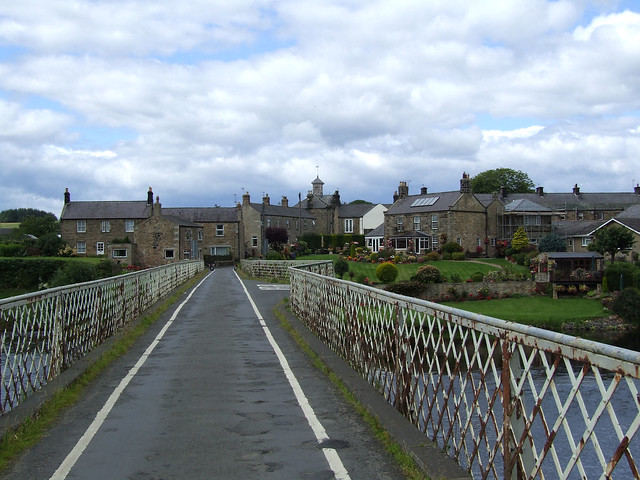Topics > Northumberland > Civil Parishes in Northumberland > Wark Civil Parish > Wark Parish, 1848
Wark Parish, 1848
WARK, a parish, in the union of Bellingham, N.W. division of Tindale ward, S. division of Northumberland; containing, with the townships of Warksburn, and Shitlington High and Low Quarter, 940 inhabitants, of whom 490 are in Wark township, 12 miles (N.W. by N.) from Hexham. The manor was a royal possession in the time of Queen Elizabeth. It was granted to the Earl of Suffolk in 1603, and afterwards sold to the Earl of Derwentwater, by whose son it was forfeited for high treason, upon which it was given, together with his other large estates, to Greenwich Hospital. The parish is one of the six into which Simonburn was divided in 1814, under the authority of an act of parliament obtained in 1811. It is bounded on the east by the North Tyne, across which is a ferry; and comprises 20,944a. 1r. 2p., whereof 20,579 acres are meadow and pasture, 95 woodland, and 270 road and waste. The village was considerably improved a few years since, by the erection of a handsome row of houses, with stone taken from some extensive ruins. The living is a rectory not in charge, in the patronage of the Governors of Greenwich Hospital, who erected the handsome church, which was opened on Aug. 10th, 1818, and also built a parsonage-house, the whole at the cost of £7,410, exclusively of the ground: the tithes have been commuted for £330, and there is a small portion of glebe land. The Presbyterians and Wesleyans have places of worship. A school is endowed with £45 per annum, and a house for the master; and the parish has a fund for apprenticing children, and the relief of the poor. About half a mile north of the village are, the site of an old church; a tumulus; and a cairn, in which urns and other relics have been found. Within the parish, also, are vestiges of several fortifications, said to have been thrown up by Edward III.; and on the bank of the river is Moat Hill, formerly occupied by a tower. There are two mineral springs in the neighbourhood, slightly impregnated with sulphur.
Extract from: A Topographical Dictionary of England comprising the several counties, cities, boroughs, corporate and market towns, parishes, and townships..... 7th Edition, by Samuel Lewis, London, 1848.

Co-Curate Page
Shitlington
- SHITLINGTON, HIGH, a township, in the parish of Wark, union of Bellingham, N. W. division of Tindale ward, S. division of the county of Northumberland, 3 miles (w.) from Wark; …

Co-Curate Page
Wark-on-Tyne
- Overview About Wark on Tyne Map Street View Wark on Tyne is a small village and civil parish usually called Wark in Northumberland, England about 12 miles north of …

Co-Curate Page
Warksburn Township, 1848
- WARKSBURN, a township, in the parish of Wark, union of Bellingham, N.W. division of Tindale ward, S. division of Northumberland, 5¼ miles (S.) from Bellingham; containing 272 inhabitants. It extends …


Co-Curate Page
Shitlington
- SHITLINGTON, HIGH, a township, in the parish of Wark, union of Bellingham, N. W. division of Tindale ward, S. division of the county of Northumberland, 3 miles (w.) from Wark; …

Co-Curate Page
Wark-on-Tyne
- Overview About Wark on Tyne Map Street View Wark on Tyne is a small village and civil parish usually called Wark in Northumberland, England about 12 miles north of …


